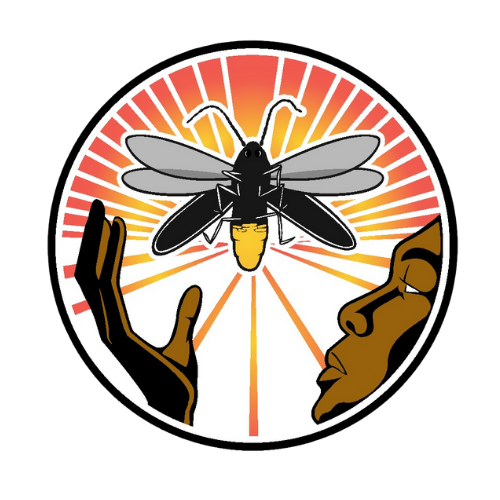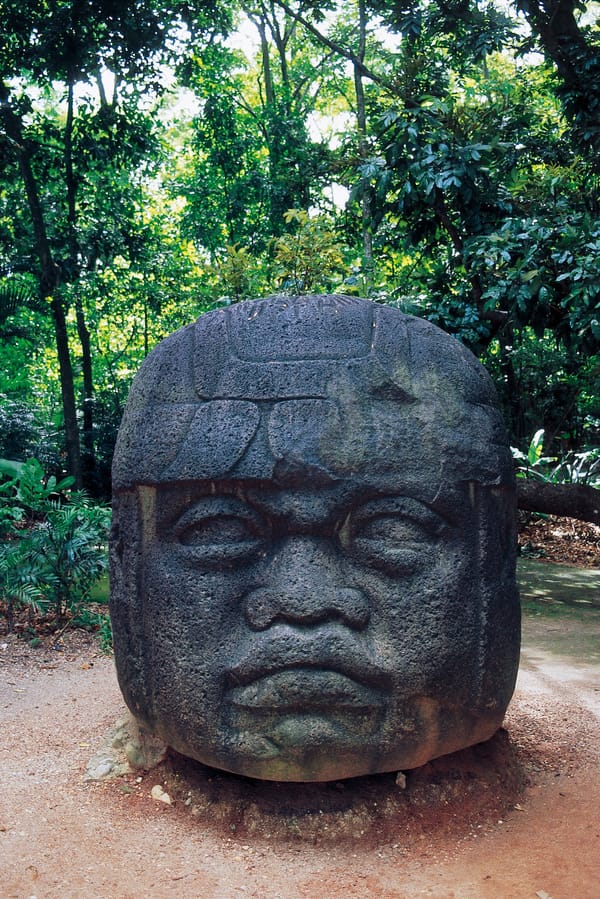Exploring the Kemet/MesoAmerican Connection Part I



By Bikbaye Inejnema
The Indigenous cultures of the world have much more in common with each other than acknowledged by the modern system that has colonized the world. The methods and customs of these indigenous groups may vary, but their approach towards the spiritual world has always maintained a high level of respect for what they can understand concerning the ancestral spirit and the World of Gods. These are the same Gods who preceded humans, the same Gods who have always filled a space within existence long before human consciousness was born, and these are the same Gods that all indigenous cultures still acknowledge today, although they may know these Gods by different names. Unlike the youth of the foreign gods of the modern religions, the indigenous people were always aware of the World of Gods. It was only a very short time ago that humanity became aware of the gods of the Bible and the Koran. These gods were introduced to people of color along with slavery, a package deal if you will. But they also came without the one thing that determines their legitimacy... a history.
If the message of peace that is being screamed all over the Earth on a daily basis is sincere, then there are only two ways to go about achieving such a peace. First, humanity must acknowledge the original spiritual system from which all systems were born. Lastly, the power that world governments usurped through colonization must be given back to the original Kingships, allowing them to govern their own people in the ways of their ancestors. Even if this happens, the process would be far from over. paradigm shift of this magnitude would require a very solid structure in order to ensure its survival. The Kingships would be governed by Larger Kingships. In ancient times, the King of all Kings carried the title of Pharaoh. The Pharaoh assumed the responsibility of assuring the natural and spiritual stability of the Earth and its inhabitants.
I can recall Master Naba saying to me, "The only thing that makes us different is what we don't know about each other". Imagine if indigenous people took the time to expose themselves and their knowledge to each other without allowing any preconceived notions or judgments to hinder an honest unification effort. The results would be positively stunning! There are very many questions we would have about cultures outside of our own, but there is only one place to look for answers, the place that holds the secrets and history of all cultures and civilizations, Merita (Africa).
Olmec
The first signs of a complex society in MesoAmerica are those of the Olmec civilization. The magnificent colossal stone heads, massive alters and sophisticated statues found at Olmec sites in southern Veracruz and Tabasco are the oldest known monuments in Pre-hispanic Mexico. The Olmecs are believed to be the first tribe to engage in ancestral and deity ritual, which is fitting, since they are seen as the "mother culture" which directly gave rise to all subsequent major civilizations of this part of the world. It is also believed that they were the first to develop large ceremonial centers with temple mounds and sophisticated systems of drainage and lagoons. Researchers have even gone on to conclude that the Olmecs were the first in Mesoamerica to devise hieroglyphic writing and the calendar used and made famous by the Maya.
Monuments were an important characteristic of Olmec centers. Today, they provide us with some idea of the nature of Olmec culture and history. The colossal stone heads are commanding portraits of individual Olmec rulers and the large symbol displayed on the 'helmet' of each head appears to be an identification motif for that person. These famous heads glorified the rulers while they were alive and commemorated them as revered ancestors after their deaths. By design, these statues made one thing very clear: the people depicted were Black men.
Alters served as the thrones of Olmec rulers. An image of the ruler would be carved out of the front. The ruler would be shown in a niche which symbolized a cave entrance to the supernatural powers of the Underworld. This scene communicated to the people their ruler's association with the cosmic powers of the universe.
Although anthropologists a n d archaeologists don't really know, it is presumed that the Olmec civilization lasted from about 1200 to 100 B.C. and was at its peak from 700 to 400 B.C. The name 'Olmec' was given to this African group by the Aztecs. It meant "rubber people" in their language. They were named that because they supplied the Aztecs with sap from rubber trees.
There is a lot that is unknown about the Olmecs. Formerly, it had been thought they worshiped only one God, a rain deity depicted as a Jaguar. But later studies. showed there were many distinct Gods represented in their art. Some believe the principal deity was fundamentally an Earth God, though his power was not limited to terrestrial matters, who took on the form of a Jaguar. This God could have a water- earth persona. As a jaguar he encompasses the forces of life or at least a strong dominance in two of its strongest categories, water and earth. This Deity supposedly had dominance over all things terrestrial and celestial. It is speculated that this God may have been half jaguar and half serpent. The jaguar represents the Earth mother with the serpent representing the water, thus combining to represent life.
Another deity of the Olmecs is the feathered or plumed serpent. In later traditions, the Quetzal feathered serpent deity was known as the inventor of books and the calendar, the giver of maize corn to mankind, and sometimes as a symbol of death and resurrection. The Maya knew this same deity as Kukulkan while the Toltecs knew him as Quetzalcoatl. Interestingly, this deity was often associated with the planet Venus, also known as Sbego by the Kemetic (ancient African) civilization. An astronomical phenomenon, recorded by Kemetic society and known as the cycle of Munny, (2,922 Earth days) records the length of time it takes for the Sbego and the Tah (Earth) to return to a position of showing their face, or a particular side to each other. This cycle is used in Kemetic society as an indication to start or end very important spiritual activities. The Kemetic civilization introduced the Sidereal calendar to the world more than 70,000 years ago.
It should be understood that the Kemetic ('Kem' meaning 'black') culture of precolonial Africa introduced knowledge of the world of Gods, philosophy, medicine, science, astronomy, agriculture, art, music and writing to all of mankind. Just as the Olmecs are the 'mother culture' to prehispanic Mexico, the Kemites are the 'mother culture' to the entire planet. For instance, the Kemetic God associated with death and resurrection is also the god who taught humanity how to farm maize. He was created by another God and had human as well as divine qualities. We know him as Wsr. The Greeks named him Osiris, and Gods like Attis, Adonys, Tammuz, etc. were created in his image. Nonetheless, this God is born and dies every year. He is considered humanity's first ancestor because, as humans, we follow the same cycle of death and rebirth. It should also be pointed out that the wife of Wsr, Aishat (renamed Isis by the Greeks) was associated with the Sbego (planet Venus) in the Kemetic spiritual system. For every God or Goddess of the Olmecs, Mayas and Aztecs, one can trace it's history to Kemet. A Neter (original word for God), like all things in existence, must have a history. But for a Neter, this history must predate human history. So it is only natural that any authentic God must have a line of human awareness traceable to the first human civilization. And from there, its history should present an enigma to the human being, due to its existence before that of humans.
This will facilitate understanding of the connectedness of all indigenous cultures. For example, the cat species is also considered sacred within ancient African spirituality. The jaguar deity of the Olmecs, to whom no name has been given, is an example we can utilize to show a small similarity to a terrestrial cat deity of the Kemites, Akeru, a lioness Netert (goddess) who has several aspects to her personality. She is considered the creator Goddess who helps keep the order of the world. Akeru keeps her identity in her temple, but takes a different form when she leaves it. When she is at peace, she presents herself as the Netert (goddess) Cat, Bastet. This is for the joy and happiness of humans. But when irritated, Akeru becomes Sekmet, the bloodthirsty warrior goddess who delivers death and suffering as she wanders. These two deities may have different qualities, but their mission is almost identical...to maintain the order of existence.
The Maya
Very little is known, by colonial anthropology, about the Mayan pantheon of Ahau (Mayan word for God), although just like the Kemites and the Olmecs, they believed that a deity ruled or governed every aspect of nature and the Universe. The Maya acknowledge a deity called Itzamna as the God that introduced writing to mankind. In the Kemetic culture, the deity that gave us writing is also the same Neter (God) who wrote down the 77 Commandments that were contributed by many Gods as a code of behavior for humans to follow, and he also governs the aspects of learning and education. We know him as Tehuti. Could this be the same deity of the Mayan civilization? To answer that question at this point would only be speculation.
It is taught in the Kemetic Mystery Schools and temples of the Nile and Niger Valleys that the Neteru (Gods) gave us a model to become like them, but they did not give us any understanding of who they are or their world. They only exposed it to us. It has since been our challenge as humans advancing towards the world of Gods to put forth the effort of duplicating their world. It is also taught that it is the effort we put forth in understanding their nature that appeases them the most. It may even take one to become a Neter (God) before he/she can fully understand the nature of a Neter. But in the meantime, we shall continue our investigation of the Mesoamerican civilizations and their Kemetic roots, giving attention to the Olmec, Mayan and Aztec cultures in the next few issues of the Rising Firefly and we shall keep our eyes open and remain in search of the Gods.